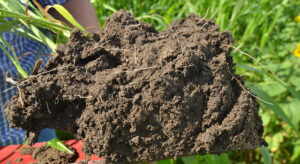As you may have read in this week’s NJ Farm Bureau newsletter or heard about elsewhere, following-up on a side comment about unfair trade practices concerning produce imports from Canada on an earlier phone call regarding the impact of COVID-19 on NJ agriculture, Congressman Jeff Van Drew arranged a meeting for growers with USDA Under Secretary for Trade and Foreign Affairs Ted McKinney. The meeting last week was hosted by Frank Donio Inc. Owner David Arena at his facility in Hammonton.
While Under Secretary McKinney provided an overview of his role through the USDA in working on trade deals for US products around the world, there was also a frank discussion about the need for farmer input into current investigations by the US Trade Representative and International Trade Commission (ITC). Called a Section 201 investigation, the ITC studies data from the agricultural community regarding import-export irregularities that cause unfair/unequal market access for American products. Such has been identified in the blueberry industry (see summary here).
Since the meeting, Representative Van Drew’s Legislative Assistant Haddon Antonucci provided the following summary of actions needed by South Jersey blueberry growers to be represented in the current investigation, including a request for your immediate attention as you must respond using the attached documents by Monday, November 16, a little more than a week from today.
This is Mr. Antonucci’s summary “regarding the Section 201 blueberry import investigation.”
“For access to the entirety of documentation and timelines for this project, go to this link: https://usitc.gov/blueberries
“The most important action item is ensuring that everyone in the South Jersey agricultural community fills out the ITC questionnaire. … attached [is] the producer questionnaire, there are also importer and purchaser questionnaires available on the website. This questionnaire collects proprietary information and will be used to help the ITC evaluate the impact of foreign imports of blueberries on domestic farmers. Also attached is a letter explaining the questionnaire and a document with ID codes.
“In order for the ITC to recommend action, there needs to be demonstrable harm to domestic industry. It is very important … to get this information to the ITC [to] demonstrate [any] deleterious impact that these imports have had on South Jersey agriculture.
“Please fill out this form as it pertains to your operations, and please provide it to other producers in the community as it pertains to their operations, particularly if they have not been contacted by the ITC yet.
“The deadline for the questionnaire is November 16. The point of contact at USTR is Jordan.Harriman@usitc.gov . Send [your questionnaire to] that email address once … completed. Congressman Van Drew’s office would like to be copied on your submission email so that he can file a holistic submission on behalf of the entire South Jersey agricultural community. Please cc haddon.antonucci@mail.house.gov with your submission to the ITC.
And in answer to a question about his original message, he stated:
“This particular investigation pertains to blueberries exclusively. There are high level discussions regarding imports of bell peppers. It is possible that there will be another section 201 investigation later this year for bell peppers, but that has not been initiated yet.

 You may have seen this information in the November 5th “Morning Ag Clips” edition. If not, please see this information being reposted here about webinars on soil health being held on November 17th and 18th.
You may have seen this information in the November 5th “Morning Ag Clips” edition. If not, please see this information being reposted here about webinars on soil health being held on November 17th and 18th.
